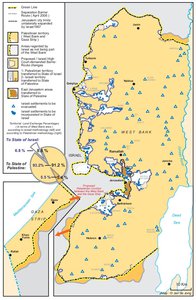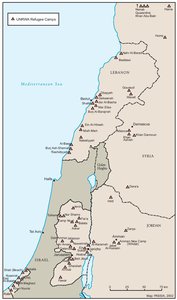THE PALESTINIAN DIASPORA, 1958
Map Details
Ten years on from the depopulation of Palestine, over one million Palestinian refugees were registered with
UNRWA. 387,665 of these were residing in the 58 camps then run by the Agency, while the remainder
depended on UNRWA for aid. A further, unknown number of refugees were not registered due to the
limited terms of UNRWA’s mandate. UNRWA was formally established in late 1949 and began operations
in May 1950. By then the need for a coordinated international program aimed at alleviating the suffering of
the dispossessed was acute. In December 1948, Israeli Prime Minister Ben Gurion had rejected UN
Resolution 194 calling for the swift return of Palestinian refugees and restitution of their property, declaring,
“...we will take everything... [w]e will not allow the Arabs back.” Three months earlier, Chief UN Mediator in
Palestine Count Folke Bernadotte’s assessment that, “...no settlement can be just and complete if
recognition is not accorded to the right of the Arab refugee to return to the home from which he has been
dislodged,” had resulted in his assassination by members of the Israeli military.
The scale of the refugee problem threatened the region with economic disaster. Initial 1947-48 waves of
refugees had tripled the population of the Gaza Strip, doubled that of the West Bank and put unmanageable
stress on the underdeveloped and poor neighboring states of Jordan, Lebanon and Syria. UNRWA came
equipped with a mandate to provide refugees with shelter and educational, health and food programs
throughout the affected region and as such became the key public service provider for well over half of all
the Palestinian people. The task was immense and in 1951 some 87% of refugee camp residents remained
in tents. Regional crises, especially Israel’s occupation of the Gaza Strip (November 1956-March 1957),
made UNRWA’s work no easier and the lives of the refugees yet harder. The task was further complicated
by budget limitations and a high refugee growth rate, which peaked at 10% in 1958. Camps struggled to
provide even minimal shelter and sanitation services, with the overwhelming majority of residents without
running water, sewage networks or proper housing.
By 1958, 70% of Gaza’s population were registered Palestinian refugees. Jordan’s annexation of the West
Bank in 1950 meant that some 75% of the Hashemite Kingdom’s population was Palestinian, 36% of whom
were registered refugees. In Syria and Lebanon the figures were lower, at 2.5% and 8% respectively.
Speaking before the UNGA in 1958, Arab delegate in charge of Palestinian affairs, Ahmed Shuqeiri,
described the refugees’ rights, incl. that to return to their homes, as “natural, inherent and self-existing... not
bestowed by the UN, let alone Israel. They cannot be denied... consent or no consent, these rights are
imprescriptible, irresistible and indivisible.”
The reemergence of the Palestinian national movement in the late 1950s found immediate and enthusiastic
support in the refugee community. Refugees in the camps of Jordan, Gaza, Syria and Lebanon rapidly took
the lead in organizing propaganda, training and guerilla incursions as the ‘rebirth’ of Palestinian resistance
took shape. Yasser Arafat and companions formally launched the Fateh movement in 1958 and by mid-
1959 its first newspaper, Our Palestine - The Call of Life was published in Lebanon.
UNRWA Registered Refugees (RRs) – Inside and Outside Refugee Camps (RCs), 1958
Related Maps
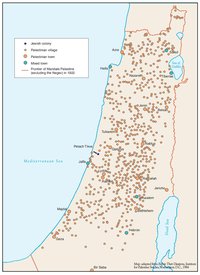
OTTOMAN PALESTINE, 1878
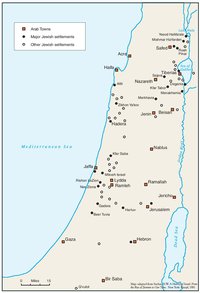
ARAB TOWNS AND JEWISH SETTLEMENTS IN PALESTINE, 1881-1914
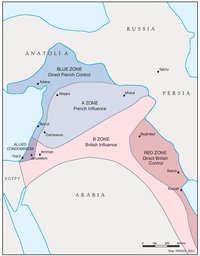
THE SYKES-PICOT AGREEMENT, 1916
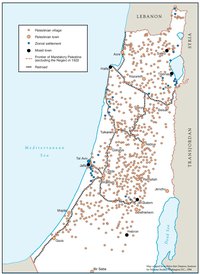
THE BEGINNING OF THE BRITISH MANDATE, 1920
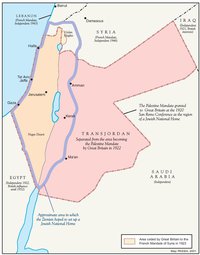
PALESTINE UNDER THE BRITISH MANDATE
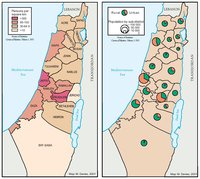
THE DEMOGRAPHY OF PALESTINE, 1931
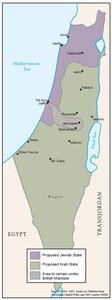
THE PEEL COMMISSION PARTITION PROPOSAL, 1937
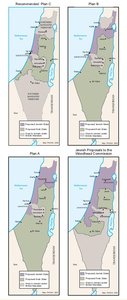
THE WOODHEAD COMMISSION PARTITION PROPOSALS, 1938
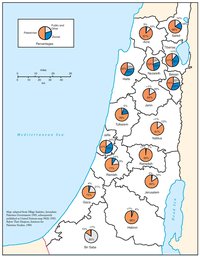
PALESTINIAN AND ZIONIST LANDOWNERSHIP BY SUB-DISTRICT, 1945
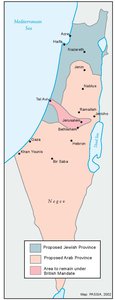
THE MORRISON-GRADY PARTITIONED TRUSTEESHIP PLAN, 1946
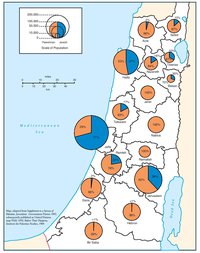
POPULATION OF PALESTINE BY SUB-DISTRICT, 1946
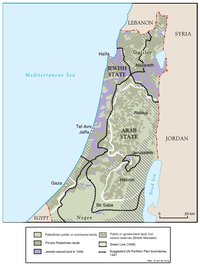
LAND OWNERSHIP IN PALESTINE, 1948
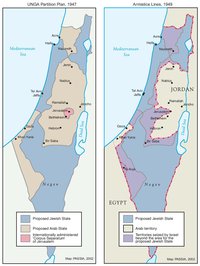
THE UNGA PARTITION PLAN, 1947 – THE 1948 WAR & THE 1949 ARMISTICE LINES
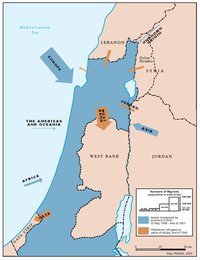
POPULATION MOVEMENTS, 1948-1951
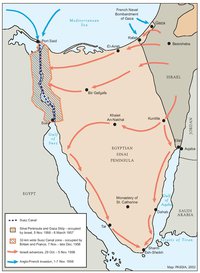
THE SUEZ WAR, 1956
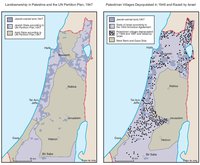
LAND OWNERSHIP IN PALESTINE AND THE UN PARTITION PLAN - PALESTINIAN DEPOPULATED AND DESTROYED VILLAGES, 1948-1949
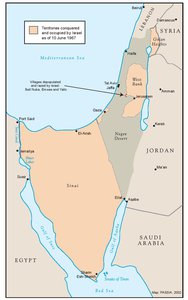
THE NEAR EAST AFTER THE JUNE 1967 WAR
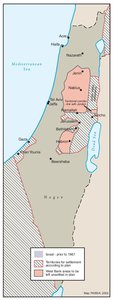
THE ALLON PLAN, JUNE 1967
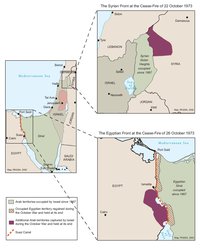
THE OCTOBER WAR, 1973
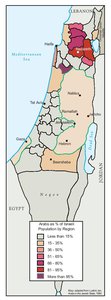
THE PALESTINIANS INSIDE ISRAEL, 1977
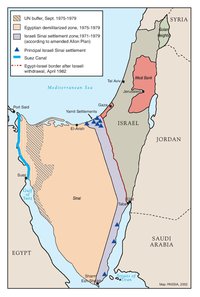
THE CAMP DAVID ACCORDS, 1978-1979
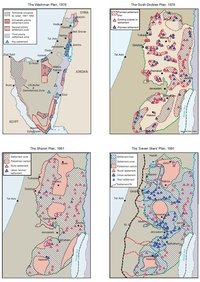
ISRAELI SETTLEMENT MASTER PLANS, 1976-1991
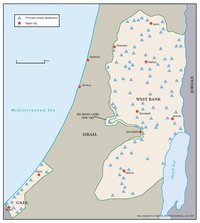
THE 1991 MADRID PEACE CONFERENCE & ISRAELI SETTLEMENTS
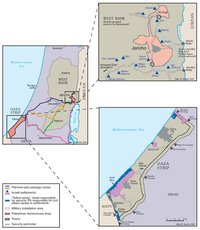
GAZA-JERICHO (OSLO I) AGREEMENT, CAIRO, 4 MAY 1994
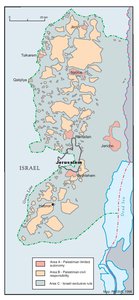
INTERIM (OSLO II) AGREEMENT, TABA, 28 SEPTEMBER 1995
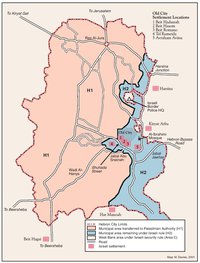
HEBRON PROTOCOL, 15 JANUARY 1997
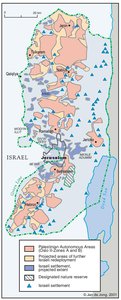
WYE RIVER MEMORANDUM, 23 OCTOBER 1998
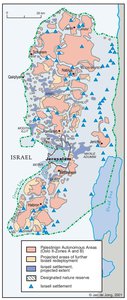
SHARM ESH-SHEIKH AGREEMENT, 4 SEPTEMBER 1999
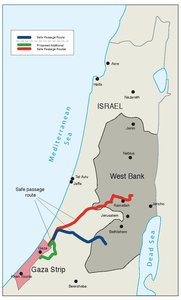
PROTOCOL CONCERNING SAFE PASSAGE BETWEEN THE WEST BANK AND THE GAZA STRIP, 5 OCTOBER 1999
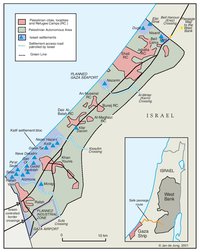
GAZA, 2000
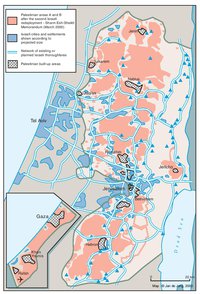
WEST BANK AND GAZA STRIP, MARCH 2000
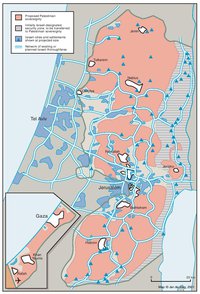
CAMP DAVID PROJECTION, JULY 2000
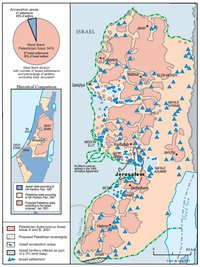
TABA TALKS PROJECTION, JANUARY 2001
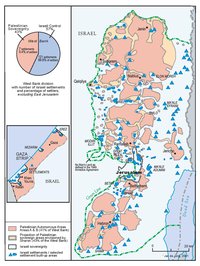
THE SHARON PROPOSAL, SPRING 2001
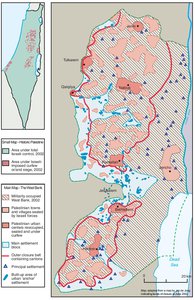
THE REINVASION OF THE PALESTINIAN TERRITORIES, 2001-2002
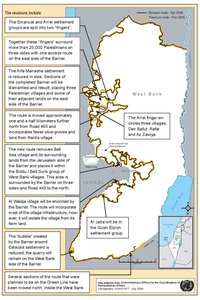
THE ROAD MAP, 2003
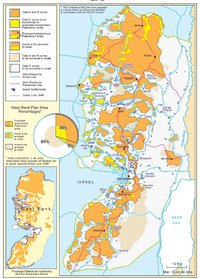
THE GENEVA INITIATIVE AND ACCORD, 2003
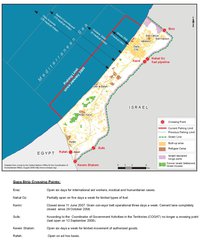
THE ISRAELI DISENGAGEMENT PLAN, 2003-2005
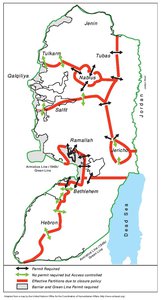
AGREED DOCUMENTS ON MOVEMENT AND ACCESS FROM AND TO GAZA, 2005
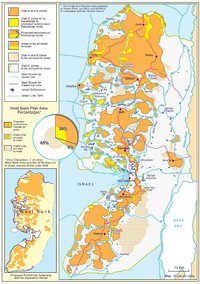
THE SETTLERS' PLAN FOR PALESTINIAN AUTONOMY, 2006
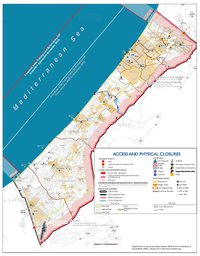
THE GAZA STRIP TODAY (2014)
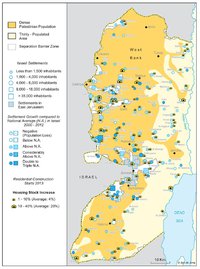
THE WEST BANK TODAY (2014)
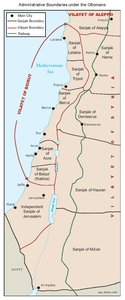
ADMINISTRATIVE BOUNDARIES
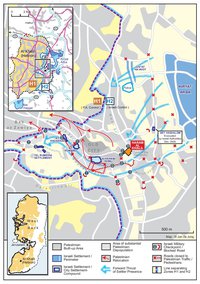
HEBRON
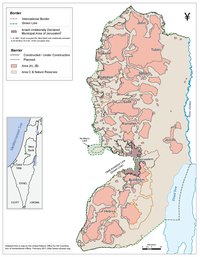
Area C
